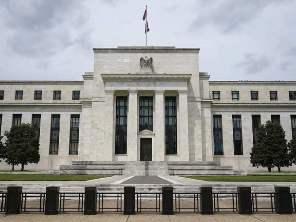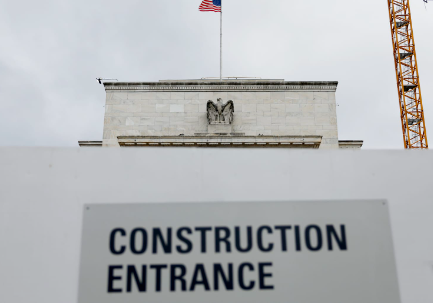Keywords : Federal Reserve rate cut, 50 basis points, FOMC meeting, Jerome Powell, interest rates, stock market, Nasdaq, S&P 500, Dow Jones, global economy, Ray Dalio, inflation, recession
In a crucial decision anticipated by global markets, the Federal Reserve is expected to announce a rate cut today as the Federal Open Market Committee (FOMC) meeting wraps up. While investors and economists alike are hoping for a 50-basis-point cut, a more modest 25-basis-point reduction appears to be the likely outcome.
Stock Markets Flat After Highs
Tuesday saw the S&P 500 and Dow Jones Industrial Average flatten after reaching all-time highs earlier in the day, signaling uncertainty in the markets ahead of the Fed’s decision. The Nasdaq Composite, however, managed a slight gain of 0.2%.
Across the Asia-Pacific region, markets opened mixed Wednesday. Japan’s Nikkei 225 hovered near the flatline, affected by disappointing data showing slower-than-expected import and export growth in August.
What to Expect from the Federal Reserve
Economists are closely watching the Fed’s decision on interest rates, with 84% of those polled by CNBC predicting a quarter-point cut. Only 16% of respondents are optimistic for a 50-basis-point reduction, although futures markets have priced in a 65% chance for the larger cut.
Jerome Powell, Federal Reserve Chair, is expected to offer crucial insights into the Fed’s future plans, including the much-watched “dot plot” which outlines the projected trajectory of interest rates.
Key Factors Shaping the Global Economy
Ray Dalio, founder of Bridgewater Associates, spoke at the Milken Institute Asia Summit in Singapore, highlighting five significant forces influencing the global economy:
- Debt and economic cycles
- Internal political tensions in the U.S.
- Geopolitical conflicts
- Extreme weather events and pandemics
- Rapid technological advancements
These factors are all contributing to current market volatility and will undoubtedly impact the Federal Reserve’s decision-making.

Historical Impact of Rate Cuts on Markets
Although a rate cut often stimulates economic growth, it doesn’t always translate to immediate market gains. Historically, the S&P 500’s reaction to the Fed’s easing of monetary policy has been mixed. CNBC’s Sarah Min examined data dating back to 1974, revealing that the first rate cut in a hiking cycle doesn’t always lead to a stock market surge.
Why a 50-Point Cut Might Be Hoped For But Unlikely
The U.S. economy remains stable, with inflation under control and unemployment close to target levels. A recent report showed retail sales in August rose 0.1%, beating expectations of a 0.2% decline, signaling that consumer spending remains resilient.
Despite rates being at a 23-year high, which has pressured the labor market and small businesses, the Fed is unlikely to justify a 50-point cut unless there are clear signs of economic distress. Historically, the Fed only resorts to such a large cut in extreme situations—such as during the 2008 financial crisis or the bursting of the dot-com bubble in 2001.
Mark Zandi, chief economist at Moody’s Analytics, expressed his hope for a larger cut, stating, “They have achieved their mandate for full employment and inflation back at target… I hope they cut 50 basis points.” However, Zandi also conceded, “But I suspect they’ll cut 25.”
The Bottom Line: Focus on the Long-Term
While a 50-basis-point cut remains a possibility, investors are better served by focusing on the long-term outlook. The Fed’s “dot plot” projections will offer valuable insights into where rates are headed in the coming years. Markets are driven by hope, but reality shows that a modest quarter-point cut is far more probable.
The U.S. Federal Reserve is widely expected to announce a quarter-point interest rate cut today, marking its first rate reduction in four years. This decision follows years of high rates aimed at combating inflation, which is now considered under control. The primary focus of the Fed’s policy has shifted toward supporting a cooling labor market and guiding the U.S. economy toward a “soft landing”—a scenario where the economy slows enough to curb inflation without tipping into a recession.
While most economists and analysts anticipate a 0.25% cut, some speculate that the Fed might surprise markets with a larger 0.50% reduction. A more significant cut could be a response to recent global economic concerns, such as slowing trade in Asia and geopolitical tensions, combined with the pressures facing small businesses and the labor market due to the current 23-year high interest rates
The Federal Open Market Committee (FOMC) will also release its “dot plot,” providing projections of future interest rates, which will offer investors further insights into the Fed’s longer-term monetary strategy.
While today’s cut may bring some immediate relief, market experts suggest that the Fed’s broader plans—reflected in its projections—will be the key to gauging the central bank’s future moves.






